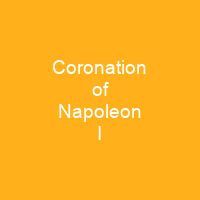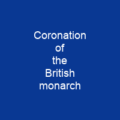Napoleon was crowned Emperor of the French on Sunday, December 2, 1804, at Notre-Dame de Paris in Paris. The Pope entered Notre Dame first, to the anthem Tu es Petrus, and took his seat on a throne near the high altar. The two parts of the ceremony were held at different ends of Notre Dame to contrast its religious and secular facets.
About Coronation of Napoleon I in brief

An unmanned balloon, ablaze with three thousand lights in an imperial crown pattern, was launched from the front of the Notre Dame during the celebration. The number of onlookers, as estimated by Wairy, was between four and five thousand, many of whom had held their places all night through intermittent showers that cleared in the morning. The ceremony started at 9 a.m. when the Papal procession set out from the Tuileries led by a bishop on a mule holding aloft the papal crucifix. There were two orchestras with numerous military bands, playing numerous military choruses, which were borne by Napoleon’s three sisters, Josephine, and the three sisters of the Royal Family. Napoleon was formally clothed in a heavy coronation mantle of velvet; the velvet was covered with embroidered golden bees, from the golden bees among the Merovingian tomb of Childeric I, that looked beyond the Bourbon past and linked the new dynasty with the ancient Merovingians; the fleur-de-lis on imperial tapestries and weighed at least eighty pounds.
You want to know more about Coronation of Napoleon I?
This page is based on the article Coronation of Napoleon I published in Wikipedia (as of Dec. 03, 2020) and was automatically summarized using artificial intelligence.







